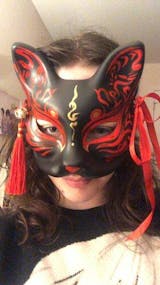I am not the type of person to write reviews but here it goes.
I really needed the clothes for an unexpected party but I chose the fast delivery option and I should say I’m impressed by their fast delivery. The product matches the pictures displayed and I’m impressed by the quality. Kudos to Eiyo Kimono.
What does the Japanese Kimono Represent?

The kimono is a traditional Japanese dress that is an elegant combination of a robe and a dress. The Japanese wear the kimono during their cultural and significant events. Most kimonos are elegant and beautiful dresses stitched with the finest material. They may include patterns such as koi fish, cherry blossoms, or abstract shapes to symbolize success, good fortune, and strong will. The structure of a kimono is quite symbolic and adds to the grace of the garment. Kimonos are usually floor-length with a puffed skirt that is decorated with sashes and various ornaments.
What is the Symbolism Behind a Kimono's Patterns?
The kimono is an adjustable dress supported with a belt around the waist, usually made of silk. Several layers underneath the robe lift the skirt. These layers are made from a piece of sturdy fabric, usually linen or polyester. In the hotter weather, one may bypass the layers and wear a simple cotton kimono casually. A kimono with its top layers and accessories may be difficult to wear and should be reserved for special events.
Kimonos are decorated with dyes, embroidery, or prints. A common method of designing a formal kimono is to use stencils to create different shapes around the hem and sleeves. It should be noted that the kimonos we see today on the streets of Japan are drastically different than the ones in early Japanese history. The first kimono robes were uncomplicated garments that were stitched together with two large pieces of cloth. At this point, the kimono's colors, patterns, and decorations were unnecessary details that people did not bother much with. However, in later periods, the kimono's legacy was strengthened, and it was widely declared as the national and cultural dress of Japan. This practice encouraged designers and weavers to pay attention to colors, fabric, and ornaments along with the kimono.
The Cherry Blossom, known as Sakura, is popular among older women. The kimono is designed along the edges with a generous amount of cherry blossom flowers. These flowers signify beauty and transition into new phases of life. The flower itself blooms briefly and has very few but outstanding petals. As the flowers are lightly colored, the cloth under them must be dark enough to make them stand out in pale pink and white tones. For this reason, dark red, mahogany, or black is chosen as the primary color for kimonos on which cherry blossom is to be printed.
Another popular symbol among kimono dresses is the pine tree, known as Matsu, which is readily grown all over Japan and is a cultural symbol. A pine tree has a considerably longer lifespan, and it is the subject of several folklore and myths in Japan's surrounding regions. The pine tree symbolizes wisdom, age, and fertility. For many in Japan, the pine tree is also a symbol of peace. As the plant is quite significant, it is featured in kimono dresses mostly worn on New Year and other events during the winter.
The History of the Kimono
The kimono has a rich history behind its making that still catches the interests of tourists today. The garment was not always the sophisticated, glamorous piece of clothing that we see today. In its initial stage, it was a haphazard garment stitched to fit all body types and sizes. Later on, during the Edo Period of the early 17th century, it developed further and consisted of small sleeves, but at this point, the term kimono was not coined yet. Around 1338, the Kamakura period came around, and Japanese men and women started wearing kimonos in bright colors. Even the soldiers in the military service were required to wear the kimono in similar colors, which is the mark of how much the garment had spread.
In the Edo era, the kimono was at its peak. Every person in Japan wore it regardless of their age, gender, and social status. The garment set them apart from foreigners and became their identity in many ways. Outsiders could always tell a Japanese person by their kimono. The kimono unified the people of Japan, and the dress is still worn today at cultural and special events to honor the old traditions. In the later periods of Japan's history, the kimono became a representative of your class, wealth, and age. The style, fabric, and color of the kimono indicated everything about your status in society. This tradition is not carried on today, and any color and fabric kimonos are worn by anyone who desires them.
What is Fashion Like in Japan Today?
In the late nineteenth century, they were brought on the Meiji period that included a great deal of Westernization in Japan. During this period, government workers were required to wear Western clothing to work, and the kimono fell out of fashion rapidly. It became very rare to see someone wearing a kimono. To protect Japan's ancient traditions and culture, women and children who did not work in government institutions were encouraged to wear the kimono regularly for their daily activities.
Men's kimonos are also called Samurai in Japan. However, tourists and visitors are often disappointed at how little the men in Japan tend to wear the Samurai. You will only witness a group of men in traditional kimonos at national and cultural events that the public has to participate in. Plenty of plays performed in the theaters of Japan include characters in full costume with the most elaborate kimonos. The audience also consists of women wearing their best kimonos to pay respect to the historic garment. In addition to this, women and children are mostly seen wearing kimonos, or the informal yukatas, in Japan today. Most public makes do with Western clothing for their daily life, such as t-shirts, types of denim, and jackets. Japanese women tend to wear kimonos at all important events in their lives. Young women may attend their graduation ceremonies in blue kimonos, and some choose to wear them at their weddings.





